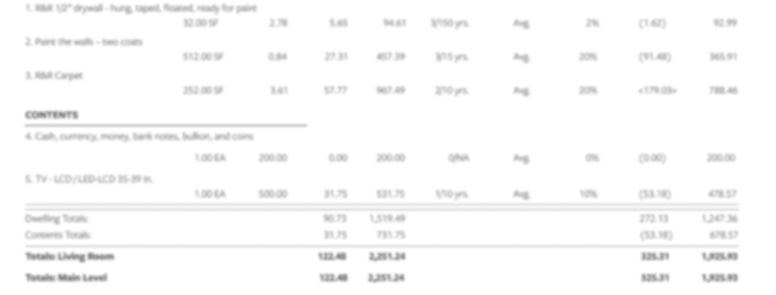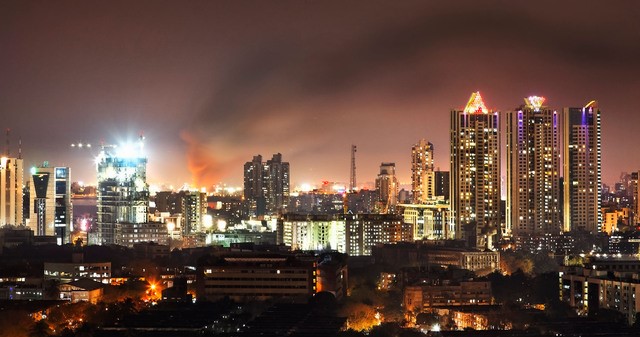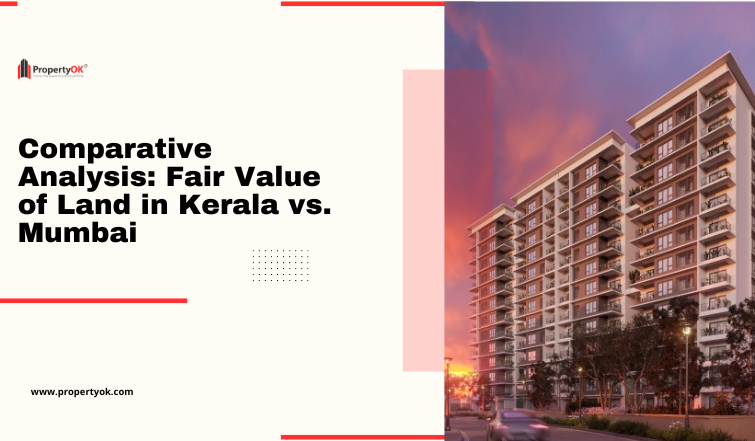Land investment has always been a cornerstone of building wealth and securing financial stability. Understanding the fair value of land is crucial for making informed investment decisions. In this blog, we will compare the fair value of land in Kerala and Mumbai, two regions with distinct economic and real estate dynamics.
This comparative analysis will provide insights into how to evaluate and invest wisely in these markets.
Let us help you navigate your perfect property! Reach out to our sales representative:

what is fair value?
The fair value of land refers to the estimated market price that a piece of land would fetch in a competitive and open market. This valuation considers location, demand, infrastructure development, and future growth prospects. Knowing the fair value helps investors make informed decisions, ensuring they pay or receive a reasonable transaction price.
Fair Value of Land in Kerala
Kerala, known for its scenic beauty and high literacy rate, offers diverse investment opportunities in its real estate sector. The fair value of land in Kerala varies significantly across its cities and rural areas. Cities like Kochi, Thiruvananthapuram, and Kozhikode command higher land values due to better infrastructure, urbanization, and economic activities.

How to Find Fair Value of Land in Kerala
To determine the fair value of land in Kerala, investors can refer to government-notified fair value rates on the state’s revenue department website. These rates are periodically updated to reflect market changes. Additionally, consulting local real estate experts and using online property portals can provide a realistic picture of current land values.
Fair Value of Land in Mumbai
Mumbai, the financial capital of India, has one of the country’s most expensive real estate markets. The fair value of land in Mumbai is influenced by its status as an economic hub, population density, and infrastructure developments such as the metro rail and coastal road projects. Areas like South Mumbai, Bandra, and Juhu are known for their exorbitant land prices.
How to Find Fair Value of Land in Mumbai
Determining the fair value of land in Mumbai involves a multifaceted approach that includes official resources, expert consultations, and online tools. Here’s a concise guide:
Government-Notified Fair Value Rates
1. Accessing Rates: Visit the Mumbai Revenue Department’s website to find government-notified fair value rates for different regions. These rates are periodically updated and categorized by land type and locality.
2. Understanding Rates: These rates provide a baseline for property transactions but may not always reflect the latest market trends, especially in rapidly developing areas.
Consulting Local Real Estate Experts
1. Market Insights: Local agents and brokers offer current market data, including recent sales and demand trends.
2. Negotiation and Advice: Based on their extensive local knowledge, they can assist in negotiations and advise on investment-worthy areas.
Using Online Property Portals
1. Property Listings: Websites like propertyok.com list properties with details on prices, sizes, and locations.
2. Market Analysis Tools: These platforms offer tools to compare properties and analyze price trends, providing a comprehensive market view.
3. Virtual Tours and Local Insights: Some portals offer virtual tours, detailed descriptions, user reviews, and locality information.
Field Surveys and Personal Inspections
1. Physical Attributes: On-site inspections help assess the land’s topography, access to utilities, and environmental factors.
2. Local Context: Interacting with residents and observing the area can reveal insights into future growth and development prospects.
By combining these methods, investors can accurately determine the fair value of land in Kerala and make informed investment decisions.

How to Calculate Fair Value of Property in Mumbai
Calculating the fair value of property in Mumbai involves analyzing several key factors:
1. Location
- Proximity to Business Districts: Higher prices near hubs like Nariman Point and BKC
.
- Amenities: Value increases with access to schools, hospitals, shopping centers, and parks.
- Transport Facilities: Close proximity to trains, metro stations, and highways boosts value.
2. Demand and Supply
- Residential Demand: High demand drives prices, especially in luxury and affordable segments.
- Commercial Demand: Continuous demand for office and retail spaces in key areas.
- Supply Levels: Limited supply with high demand escalates prices.
3. Government Valuation
- Ready Reckoner Rates: Government-published rates provide a baseline for transactions.
- Usage: These rates are starting points; actual market values are typically higher.
4. Comparative Market Analysis (CMA)
- Recent Sales: Compare prices of recently sold similar properties in the area.
- Adjust for Differences: Account for size, condition, and features.
- Trend Analysis: Identify market trends and adjust values accordingly.
Key Factors Influencing Fair Value in Kerala and Mumbai
Economic Growth and Infrastructure Development
Economic growth and infrastructure development play pivotal roles in determining the fair value of land. Kerala’s growth is driven by tourism, remittances, and IT parks, while Mumbai’s is fueled by finance, entertainment, and corporate headquarters. Infrastructure projects such as Kochi Metro in Kerala and the Mumbai Trans Harbour Link significantly impact land values in these regions.
Population Density and Urbanization
Mumbai’s high population density leads to a greater demand for land, driving up prices. In contrast, Kerala, with its more balanced urban-rural distribution, experiences varying land values across different regions. Urban centers in Kerala see higher land values compared to rural areas due to better access to amenities and employment opportunities.
Investment Opportunities in Kerala
Residential Land Investment
Investing in residential land in Kerala’s urban areas like Kochi and Thiruvananthapuram can be lucrative due to the growing demand for housing. The fair value of land in these cities is expected to rise with ongoing and planned infrastructure projects, making it a promising investment.
Commercial Land Investment
Kerala’s commercial real estate market is expanding with the development of IT parks and shopping complexes. Investing in commercial land in prime locations can yield substantial returns as businesses seek to establish operations in the state.
Investment Opportunities in Mumbai
Premium Residential Areas
Mumbai’s premium residential areas such as South Mumbai and Bandra offer high investment potential. Although the initial investment is substantial, the fair value of land in these areas continues to appreciate due to limited supply and high demand.
Emerging Suburbs
Investing in emerging suburbs like Thane and Navi Mumbai can be a strategic move. These areas are witnessing rapid development and offer more affordable options compared to the city center, with significant potential for future appreciation.
Explore this blog to know market value of land and how to calculate it:
WHAT IS THE MARKET VALUE OF LAND AND HOW TO CALCULATE IT?
Comparative Analysis: Risk vs. Reward
Investing in real estate requires weighing the risks and rewards associated with different locations. Here’s an in-depth look at the risk and reward profiles for Kerala and Mumbai:
Kerala
Pros
- Lower Initial Investment: Property prices in Kerala are generally lower than in Mumbai, making it more accessible for investors with smaller budgets. This lower entry cost allows for a broader range of investment opportunities.
- Diverse Investment Opportunities: Kerala offers a mix of urban, semi-urban, and rural properties. Investors can choose from residential, commercial, and agricultural lands depending on their preferences and risk tolerance. Urban centres like Kochi, Thiruvananthapuram, and Kozhikode provide good prospects for both residential and commercial investments.
- Potential for High Returns in Emerging Urban Centers: Cities like Kochi and Thiruvananthapuram are experiencing significant growth due to infrastructure and IT sector developments. Investing in these emerging urban centres can yield high returns as these areas continue to develop and attract more businesses and residents.
Cons
- Slower Pace of Infrastructure Development: Compared to Mumbai, the pace of infrastructure development in Kerala is slower. This can delay the appreciation of property values, particularly in less developed areas.
- Market Fluctuations Influenced by Tourism and Remittance Inflows: The real estate market in Kerala is significantly influenced by tourism and remittances from the expatriate community. Economic downturns or changes in these sectors can lead to market volatility, affecting property values and returns.
Mumbai
Pros
- High Potential for Capital Appreciation: Mumbai is one of India’s most dynamic and rapidly appreciating real estate markets. Properties in prime locations such as South Mumbai, Bandra, and Juhu often see substantial increases in value over time, offering excellent potential for capital appreciation.
- Robust Infrastructure and Connectivity: Mumbai boasts well-developed infrastructure, including an extensive public transport network, major highways, and upcoming projects like the metro rail expansions and coastal road. This robust infrastructure enhances property values and makes the city a preferred investment destination.
- Strong Economic Base with Continuous Demand: As the financial capital of India, Mumbai has a diverse and resilient economy. The continuous demand for residential and commercial spaces driven by various industries such as finance, entertainment, and IT ensures a steady appreciation of property values.
Cons
- High Entry Cost and Initial Investment: The cost of acquiring property in Mumbai is significantly higher than in Kerala. This high entry cost can be a barrier for investors with limited capital and necessitates larger financial commitments.
- Intense Market Competition: Mumbai’s real estate market is highly competitive, with many buyers and investors vying for limited properties. This competition can drive up prices and make it challenging to find good deals.
- Regulatory Complexities: Navigating the regulatory environment in Mumbai can be complex, with stringent laws, multiple approval processes, and frequent policy changes. This can add to the time and cost involved in property transactions.

Conclusion: Making an Informed Investment Decision
In Conclusion, When comparing the fair value of land in Kerala and Mumbai, investors must consider their financial capacity, risk tolerance, and investment goals. Kerala offers a lower entry cost and diverse opportunities, making it suitable for investors looking for steady growth. With its high appreciation potential, Mumbai is ideal for those with a higher risk appetite and investment capacity.
Ultimately, thorough research and consulting with real estate experts are essential steps in making a sound investment decision. By understanding the fair value of land and the unique dynamics of each market, investors can strategically position themselves to reap significant returns in the real estate sector.
Frequently Asked Questions And Answers
1. Why is location so important in determining the fair value of land?
Location is crucial because it affects the desirability and functionality of a property. Proximity to business hubs, transport facilities, and amenities like schools and hospitals increases a property’s value. In contrast, properties in less accessible or underdeveloped areas may have lower values.
2. How do market trends and future developments impact fair value?
Market trends and future developments significantly impact fair value by influencing demand and supply. Announcements of new infrastructure projects, economic policies, and urban development plans can increase property values in anticipation of improved amenities and connectivity.
3. How do I use government-notified fair value rates?
Government-notified fair value rates, like the Ready Reckoner rates in Mumbai or fair value rates in Kerala, provide a baseline for property transactions. Access these rates on official government websites and use them as a starting point for negotiations while also considering current market conditions and expert advice.

 Thank You
Thank You




